The first time I heard the term spatchcock was in 2009, in an extremely fancy butcher shop in Sydney, Australia, where the cuts were displayed as if you were shopping in a meat boutique. I thought 'spatchcock' was cute and funny, but little did I know until I looked it up and tried it out. It simply means to butterfly a chicken -- splitting the bird open so it would lay flat and roast quickly.
The benefits spatchcocking? The bird browns and cooks more evenly. The meat retains its succulence.
Since then, I’ve been spatchcocking chickens on a regular basis. The term originally meant to cull immature male chickens. Nowadays, it’s a cooking technique. It’s also known as “spattlecock.” Whichever term you use, the method saves time. A service-oriented butcher will do the deed for you. First time out, it may seem a little strange and seemingly violent. However, once you get the swing of spatchcocking a chicken, you can try it on say, a turkey for Thanksgiving!
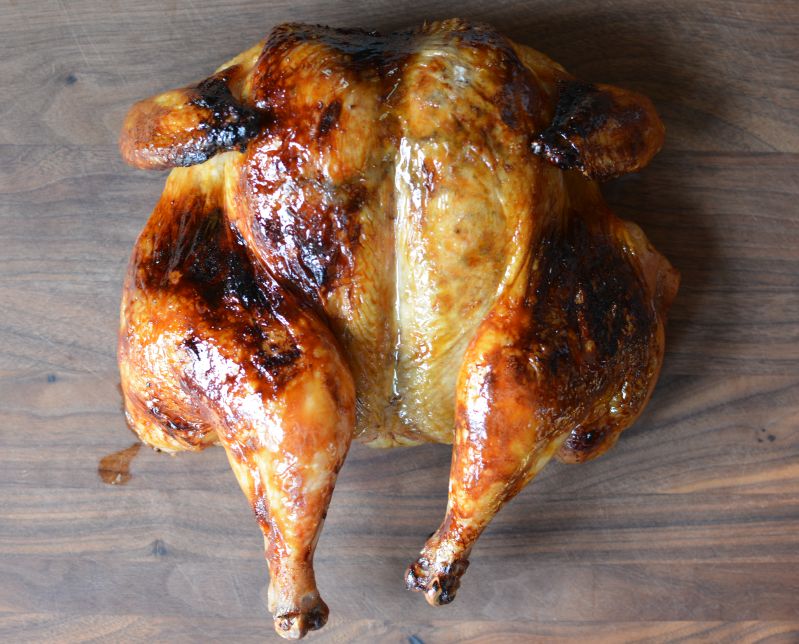
Because of writing Thanksgiving-oriented assignments for magazines like Rodale’s Organic Life and Rachael Ray Every Day magazine, I’ve roasted a lot of turkeys. What I've learned over the years:
- If you spatchcock a 13-pound turkey (purchased weight, with giblets), the roasting time is roughly 1.5 hours.
- A 4-pound chicken takes about 40 minutes.
- If you spatchcock/butterfly the bird, you'll spend less time in a hot kitchen and more time sipping a cooling beverage.
Below you'll find much of what you'll need to prep and cook your bird to perfection, from info on equipment and bird size to a step-by-step guide to butchering it plus general roasting tips!
Spatchcock FAQ: equipment, bird size, turkey vs chicken
What kind of equipment do you need to spatchcock? Tools for spatchcocking a bird include poultry shears, and if you’re attacking a turkey, a serrated bread knife. I’ve used a heavy cleaver but have cut through the breast bone with it. However, there’s more control with poultry shears. The offset serrated knife is the same one that I use for making banh mi sandwiches. Its funny shape gives you greater leverage.
How big of a bird do you want to spatchcock? Anything up to 14 pounds works well, I’ve found. The reason is that the shears can handle the job easily and a heavy-duty, rimmed ½ baking sheet pan can hold a splayed-out bird of that maximum size. Any bigger and you’ll need a full-sheet pan and a commercial-grade oven.
Do you handle a chicken differently than a turkey? A chicken is easier to deal with because it’s smaller and easy to manipulate. A 13-pound turkey is three times bigger than an average chicken so spatchcocking the bigger bird requires a little more finesse.
Step-by-step guide to spatchcocking a chicken or turkey
Prep the bird: If present, remove the bag of giblets, rinse the parts, then reserve the heart, gizzard, and neck (cut with poultry shears into 2 or 3 pieces) for stock. On a turkey, remove the legs from the clamp at the rear of the bird; use the poultry shear tips to grab at the clamp ends and dislodge it from the bird. Put the bird on a large, rimmed baking sheet to do the butchering that follows.
Remove the backbone: Whether you’re dealing with a chicken or turkey, snip off the tail, and if needed, trim some of the large hood of fat near the neck. With the breast facing down, use poultry shears to remove the backbone. To avoid biggish tough bones, cut as close to the back as possible. I start from the top of the neck as a easy guide.
On a turkey (below), things get tough to cut with shears close to the thigh. That’s when you grab the serrated bread knife to saw your way through and finish the job. Use the shears to cut the backbone into 3 or 4 pieces, then add it to the parts for stock.
Deal with the wishbone and keel bone: To later carve the bird with grace, remove the wishbone from the chicken or turkey. Use the tip of the shears, or a paring or boning knife to cut and reveal the wishbone on each breast. Use the poultry shears to snip and remove the two bone sections.
On a turkey, open up the bird and find the dagger-shape keel bone and cartilage in the center of the breast; use a knife tip to score through the membrane along both sides of the bone. This makes flattening the bird easier. I'm scoring a 13-pound turkey below:
With a turkey with bones that are much bigger and stiffer, I like to set the baking sheet on the floor, squat (this is when your malasana yoga poses pay off), and use my body weight to help my hands exert lots of pressure with ease. Expect to hear cracking when the bones give way. (If the turkey is slippery, pat the top dry before pressing.)
Position for cooking: Whether grilling or roasting, fold in the legs so the bird looks knock-kneed. If you didn’t clip off the wing tips, bend them back as if the bird is trying to do a tricep stretch. The bird will lay flat to cook quickly, evenly, and attain maximum crisp skin goodness.
Roasting tips
Season the spatchcocked chicken or turkey however you like. For example, see my recipe for roasting chicken with curry leaf. How I roast the seasoned bird:
- For a 4-pound chicken, roast it on a rack or directly on the baking sheet in a preheated 425F oven for 40 minutes, or until the thickest part of the breast registers at 160F on a meat thermometer. During the last 15 minutes, the chicken at the top of this article was glazed every 5 minutes with honey and soy sauce. Let the chicken rest 10 minutes before cutting.
- For a turkey, roast it on a rack or directly on a baking sheet in a preheated 450F oven. After 20 minutes, baste with juices, then lower the heat to 400F. Then every 15 to 20 minutes, rotate the pan, baste if desired, and check the bird temperature. It’s done when a thermometer inserted in the deepest part of the breast registers 150F and the thigh registers 165F. Remove from the oven, tent with foil for 20 to 30 minutes before carving.
Between now and the holidays, practice spatchcocking on a chicken and that turkey will be a piece of cake to deal with! Or, do it year round so you don't have to worry come the end of the year.
Related post: Vietnamese-American Thanksgiving Ideas













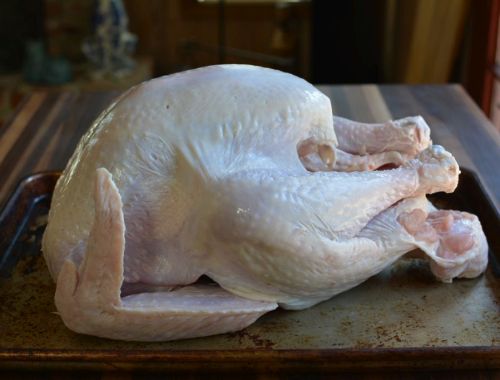
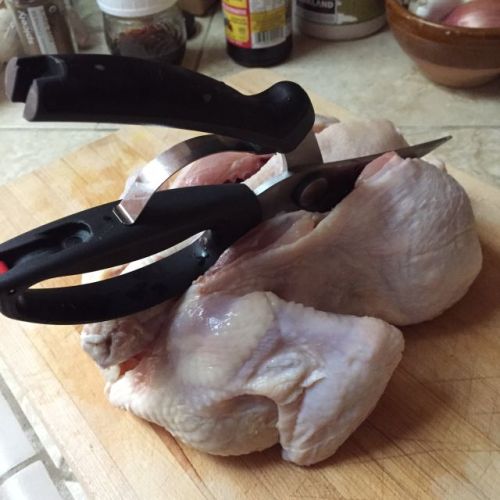
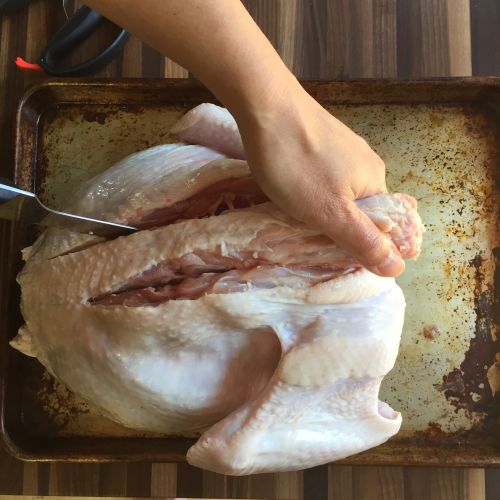
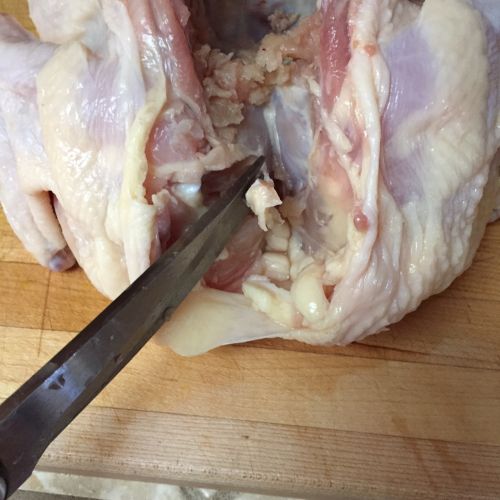
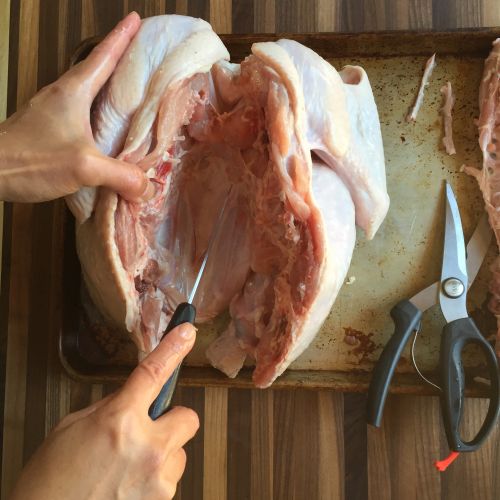
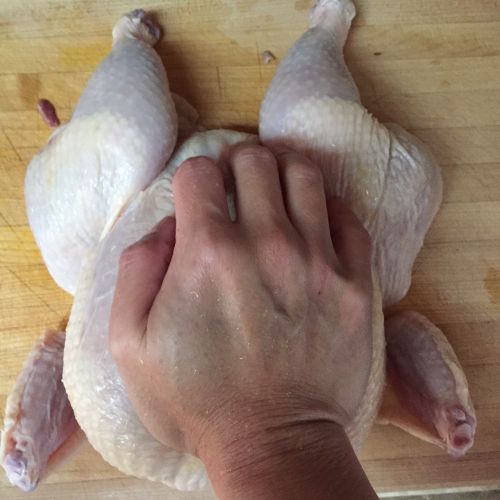
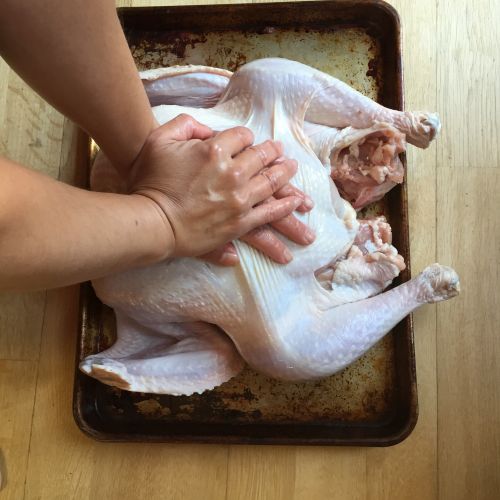




Alyce says
I used this technique twice this Thanksgiving season - we did a 9 pound “practice turkey” a few days ahead, and a 12 pound “actual day” turkey out on the grill. Both were done in +/- an hour and turned out great. Thanks Andrea for the clear instructions - I’ll never cook a turkey whole again!
Andrea Nguyen says
That's a great idea, Alyce! Grilled butterflied turkey for the holidays.
Sharon Y Ragland says
Your page is a new 'go-to' for finding ways to finesse cooking techniques. I found this over six pound roasting chicken and needed help and when I saw that you had butterflied (aka spatccocked) turkey (which is how I'd hoped to cook this bird); I knew I'd found the right page. Thanks for the tips! I've butterflied birds before, but never one over three pounds. This baby is just above six pounds.
Andrea Nguyen says
So happy to be of help, Sharon! Thank you.